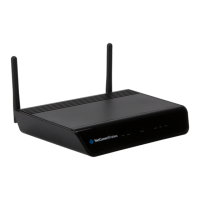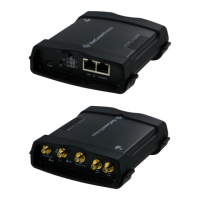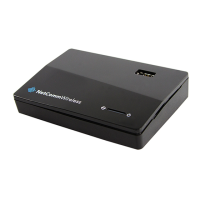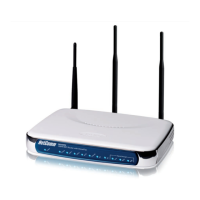NetComm Wireless AC1200 WiFi Gigabit Router with Voice
A name used to identify the VPN connection profile.
Selects whether to use Internet Key Exchange (IKE) or Manual mode.
Enter the IP address of the local network for use on the VPN connection.
Enter the subnet mask in use on the local network.
Enter the IP address of the remote network for use on the VPN connection.
Enter the subnet mask in use on the remote network.
Enter the gateway to use on the remote network.
Enter the time in seconds for the phase1 key lifetime.
Enter the time in seconds for the phase2 key lifetime.
Select the encapsulation protocol to use with the VPN connection. You can choose ESP, AH or ESP+AH
Choose the type of Perfect Forward Secrecy for the VPN connection.
Puts IKE SA negotiation into three packets, with all data required for the SA pass by the initator.
The pre-shared key is the key that peers used to authenticate each other for Internet Key Exchange. Double quotation marks (“)
are not supported in this field.
Determines how the IPSec connection is made. Options are On demand, Always on and Manual.
Specifies the domain name of the remote network.
Specifies the domain name of the local network.
Dead Peer Detection (DPD)
Turns on or off the dead peer detection keep alive messages.
Provides authentication options for the XAUTH method.
Turns on or off the Internet Key Exchange proposal method and provides configuration options for the IKE.
Turns on or off the IPSec proposal method and provides configuration options for the IKE.
Figure 32 - IPSec tunnel configuration
L2TP client
The Layer 2 Tunneling Protocol is a tunneling protocol used to support virtual private networks (VPNs). The NF13ACV supports
MPPE (Microsoft Point-to-Point Encryption) and CCP PPP Compression Control Protocol.
Figure 33 - L2TP client

